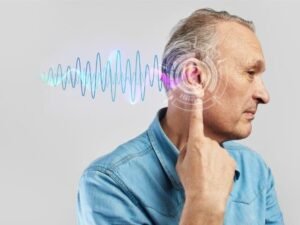What is Tinnitus Sound Masking Therapy?
Tinnitus is a common condition characterized by the perception of phantom sounds, such as ringing, buzzing, or hissing, in the ears without any external source. One of the most effective ways to manage tinnitus is through sound masking therapy, which helps reduce the perception of tinnitus by introducing external sounds to cover or blend with the internal ringing. This article explores sound masking therapy in detail, covering how it works, different masking options, and resources for further information.
The Concept of Masking Therapy
Sound masking therapy operates on the principle of using external sounds to minimize the perception of tinnitus. By introducing a secondary sound at a similar frequency to the tinnitus sound, the brain focuses on the external sound rather than the phantom noise. This can help individuals feel less distressed and improve their ability to concentrate and sleep.
Research has shown that sound masking therapy does not eliminate tinnitus but can significantly reduce its impact (Harvard Health).
Types of Sound Masking Therapy:
There are various types of sound masking therapies available, depending on individual preferences and the severity of tinnitus. Below are some of the most effective options:
1. White Noise Machines
White noise machines generate a consistent, broadband sound that helps mask tinnitus. These machines are commonly used for sleep and relaxation. They are available in various forms, including tabletop models and smartphone apps.
- Recommended White Noise Machines: Sound Oasis | LectroFan
2. Hearing Aids with Sound Masking Features
For those with tinnitus and hearing loss, hearing aids equipped with sound masking features can provide dual benefits. These devices amplify external sounds while also playing masking noise to reduce tinnitus perception.
- Learn More: American Tinnitus Association | Widex Hearing Aids
3. Nature Sound Therapy
Natural sounds such as rain, ocean waves, and rustling leaves can provide soothing relief for tinnitus sufferers. Many people find nature sounds more relaxing than artificial white noise.
- Free Nature Sounds: Noisli | A Soft Murmur
4. Customized Sound Therapy
Some advanced masking therapies involve personalized soundscapes tailored to an individual’s specific tinnitus frequency. These therapies are often provided by audiologists and specialized tinnitus clinics.
- Professional Tinnitus Therapy: Tinnitus Clinic UK | Tinnitus Retraining Therapy (TRT)
5. Smartphone Apps for Tinnitus Relief
Several smartphone apps offer sound masking therapy, allowing users to customize their listening experience.
- Popular Apps: Tinnitus Help App
Benefits of Sound Masking Therapy
- Reduces Perceived Loudness of Tinnitus: By introducing external sounds, tinnitus becomes less noticeable.
- Enhances Sleep Quality: Many tinnitus sufferers struggle with sleep; masking sounds can promote relaxation.
- Improves Concentration: Background sounds help reduce distractions caused by tinnitus.
- Non-Invasive and Drug-Free: Unlike medications, sound therapy does not have side effects.
Challenges and Considerations
While sound masking therapy is beneficial for many, it may not work for everyone. Some individuals with severe tinnitus may require a combination of sound therapy, cognitive behavioral therapy (CBT), and lifestyle modifications. Additionally, finding the right masking sound may require trial and error.
For professional guidance, consult an audiologist: Find an Audiologist
Conclusion
Tinnitussound masking therapy is a valuable tool for those seeking relief from persistent ringing in the ears. Whether using white noise machines, hearing aids, or smartphone apps, there are various ways to tailor sound therapy to individual needs. By incorporating sound masking techniques, many tinnitus sufferers can experience improved quality of life.
Try out the Tinnitus Help App to mask your Tinnitus!







